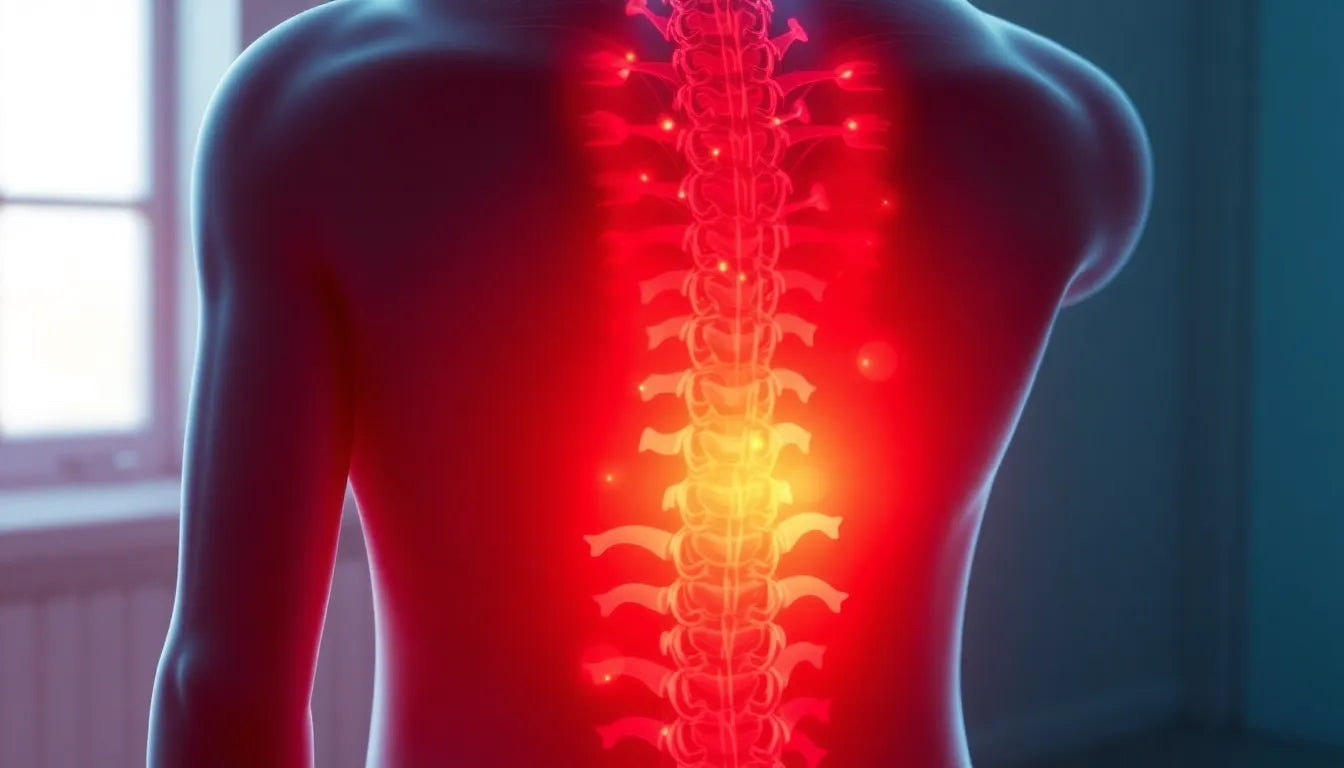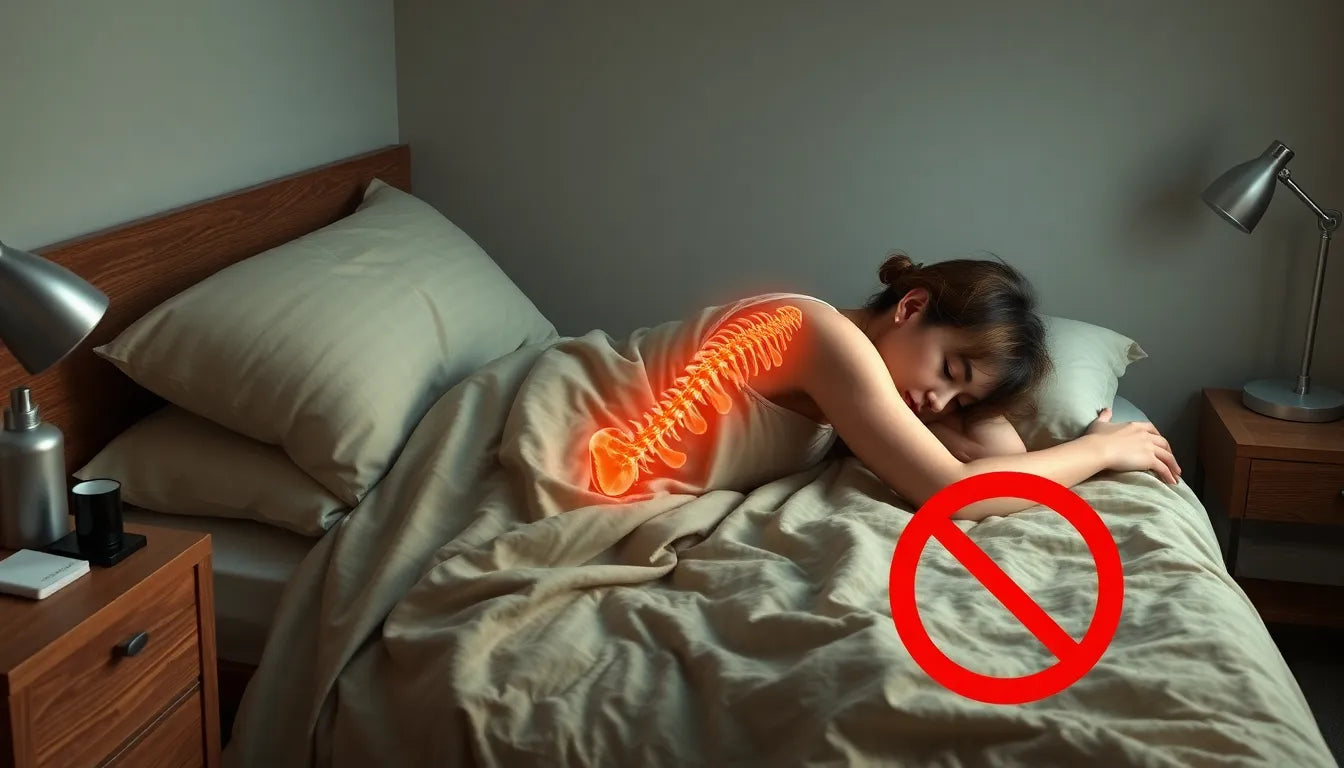Imagine waking up one morning, stretching your arms, and feeling a sudden, sharp pain in your lower back. You brush it off, thinking it might just be a muscle strain from yesterday's activities. However, as the day progresses, the pain doesn't subside and even starts radiating down your leg. This scenario is all too common and often leads individuals to question whether they might be dealing with a herniated disc.
Understanding what a herniated disc is
A herniated disc, also known as a slipped or ruptured disc, occurs when the soft inner gel of a spinal disc pushes through a tear in the tougher exterior. This condition is significant not only due to its frequency but also because of its potential to disrupt daily life with pain, numbness, or weakness. Understanding a herniated disc is crucial as it can help in identifying symptoms early and seeking appropriate treatment to prevent further complications.
Why understanding this condition matters
Herniated discs are more common than one might think, especially among individuals aged 30 to 50. They can result from various causes, including aging, injury, or lifestyle factors. The impact of a herniated disc can range from mild discomfort to severe pain that hinders mobility and quality of life. Therefore, being informed about this condition is essential for anyone experiencing unexplained back pain or related symptoms.
What you will learn
In this post, we'll delve into the anatomy of the spine and how a herniated disc occurs, explore the common causes and risk factors, and detail the symptoms and stages of herniation. Additionally, we'll cover the diagnosis process and treatment options available, ranging from conservative methods to surgical interventions. Finally, we'll provide insights into pain management strategies and lifestyle adjustments that can help ease the discomfort associated with a herniated disc.
anatomy of the spine and causes of herniated discs
The human spine is a complex structure composed of vertebrae, intervertebral discs, nerves, and the spinal cord. The vertebrae are the bony segments that stack to form the spinal column, providing both support and flexibility. Between each pair of vertebrae lies an intervertebral disc, which acts as a cushion to absorb shock and facilitate movement. These discs have a soft, gel-like center called the nucleus pulposus, surrounded by a tougher exterior known as the annulus fibrosus. When a disc herniates, the nucleus pulposus pushes through a tear in the annulus fibrosus, potentially pressing on nearby nerves and causing pain.
Herniated discs often result from the natural aging process, where discs lose water content and elasticity, making them more prone to tearing. However, other factors can contribute to disc herniation, including sudden trauma, repetitive strain, and lifestyle choices. Here are some common causes:
- Aging: As we age, spinal discs naturally degenerate, increasing the risk of herniation.
- Injury: Sudden impact or heavy lifting can cause a disc to rupture.
- Lifestyle factors: Poor posture, lack of exercise, and obesity can strain the spine.
Additional risk factors include:
- Sedentary lifestyle
- Smoking, which reduces oxygen supply to discs
- Genetic predisposition
symptoms and stages of herniated discs
The symptoms of a herniated disc can vary significantly depending on its location in the spine. The most common regions affected are the lumbar (lower back) and cervical (neck) areas, though thoracic (mid-back) herniations can occur as well. Here's a breakdown of symptoms by location:
| Region | Common Symptoms |
|---|---|
| Lumbar | Lower back pain, sciatica (pain radiating down the leg), numbness or tingling in the legs |
| Cervical | Neck pain, pain radiating to the shoulder or arm, weakness in the arm or hand |
| Thoracic | Mid-back pain, pain radiating around the chest, difficulty breathing |
Understanding the stages of herniation can also help in identifying the severity of the condition:
- Degeneration: Discs begin to wear down, losing water content and elasticity.
- Prolapse: The nucleus pulposus starts to push through the annulus fibrosus.
- Extrusion: The nucleus pulposus breaks through the annulus fibrosus, but remains within the disc.
- Sequestration: The nucleus pulposus leaks out of the disc and into the spinal canal.
diagnosis and treatment options for herniated discs
Diagnosing a herniated disc typically involves a combination of medical history, physical examinations, and imaging tests. Common diagnostic techniques include:
- MRI (Magnetic Resonance Imaging): Provides detailed images of the spine, highlighting disc herniation and nerve compression.
- CT Scan: Offers cross-sectional images to assess the extent of the herniation.
- Physical Examination: Tests reflexes, muscle strength, and range of motion to identify affected areas.
Treatment options for herniated discs vary based on severity and individual needs. They range from conservative approaches to surgical interventions:
- Conservative Treatments: Include physical therapy, anti-inflammatory medications, and corticosteroid injections to reduce pain and inflammation.
- Surgical Options: Considered when conservative treatments fail, options include discectomy or laminectomy to relieve nerve pressure.
Understanding the anatomy, symptoms, and treatment options for herniated discs is crucial for managing pain and improving quality of life. In the next section, we will explore pain management strategies and lifestyle adjustments that can further aid in recovery.
Effective pain management and lifestyle adjustments
Living with a herniated disc can be challenging, but there are several strategies you can adopt to manage pain and enhance your quality of life. One of the most effective ways to alleviate discomfort is through proper posture and ergonomics. Ensuring that your workspace is set up to support a healthy posture can significantly reduce strain on your back. Consider using ergonomic chairs, standing desks, or lumbar support cushions to maintain the natural curve of your spine.
In addition to ergonomic adjustments, incorporating regular exercise and stretching into your routine can help maintain spinal health. Low-impact activities such as walking, swimming, or cycling can strengthen the muscles supporting your spine without putting undue stress on your discs. Stretching exercises, particularly those targeting the back and core, can improve flexibility and reduce tension.
Exploring alternative and non-surgical treatments
For those looking to avoid surgery, there are numerous non-surgical treatments available that can provide relief from herniated disc symptoms. Chiropractic care, for instance, involves manual adjustments that can help realign the spine and reduce nerve pressure. Similarly, physical therapy can be tailored to address specific areas of discomfort, with therapists guiding you through exercises designed to strengthen and stabilize the spine.
Orthotics, such as back braces, can also offer support and limit movement that might aggravate the condition. Emerging technologies and therapies, like spinal decompression therapy, are gaining popularity for their potential to relieve pressure on herniated discs. It's important to consult with a healthcare professional to determine which treatments are most suitable for your specific condition.
Frequently asked questions
What are the first signs of a herniated disc?
The initial symptoms of a herniated disc often include localized pain in the back or neck, which may radiate to the arms or legs. Numbness, tingling, or weakness in the affected areas can also occur. If you experience persistent pain or neurological symptoms, it's advisable to seek medical advice.
Can a herniated disc heal on its own?
In many cases, a herniated disc can heal over time with appropriate care. The body's natural healing processes can reduce inflammation and reabsorb the herniated material. Factors influencing recovery include the severity of the herniation, age, and overall health. Maintaining a healthy lifestyle and following medical advice can aid in the healing process.
How long does it take to recover from a herniated disc?
Recovery time varies depending on the individual and the severity of the condition. Many people experience significant improvement within a few weeks to a few months with conservative treatments. However, some cases may require longer recovery periods, especially if surgical intervention is necessary.
What activities should be avoided with a herniated disc?
It is important to avoid activities that can exacerbate your condition, such as heavy lifting, high-impact sports, and any movements that involve twisting or bending the spine. Instead, focus on low-impact exercises and consult with a healthcare provider for personalized recommendations.
When is surgery necessary for a herniated disc?
Surgery is typically considered when conservative treatments fail to relieve symptoms or if there is significant nerve compression causing severe pain, weakness, or loss of function. Surgical options aim to remove the herniated material and alleviate pressure on the nerves, leading to improved outcomes for many patients.
Understanding and managing a herniated disc involves a combination of medical guidance, lifestyle adjustments, and, when necessary, medical intervention. By staying informed and proactive, individuals can effectively manage their symptoms and improve their quality of life.


















